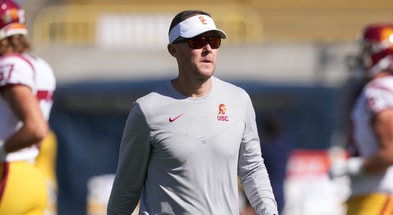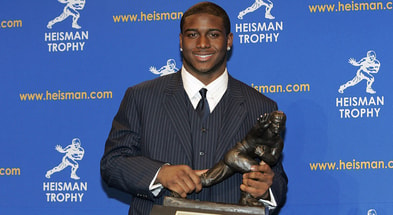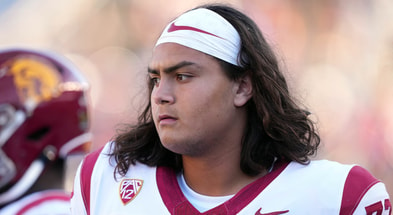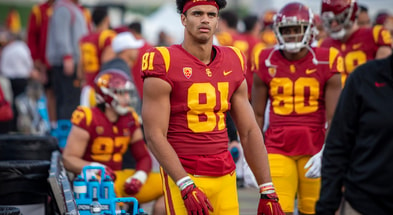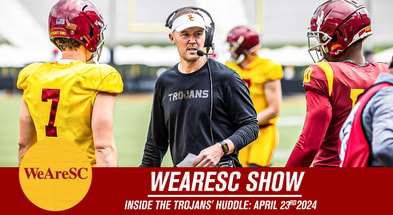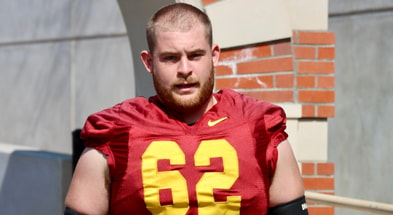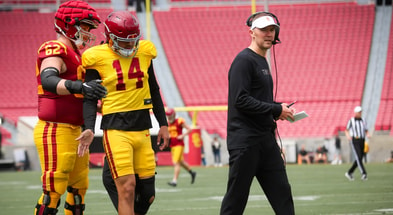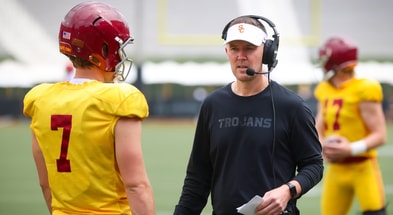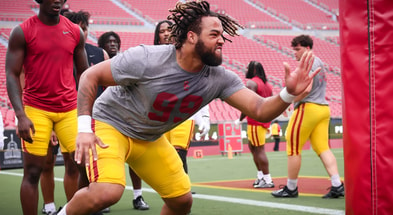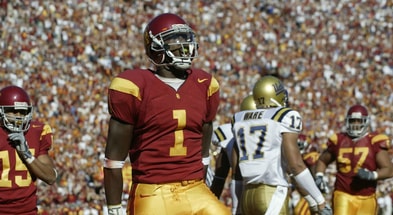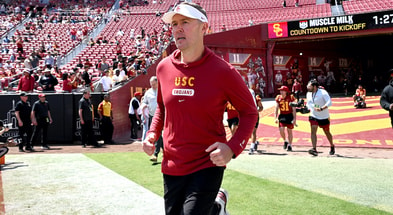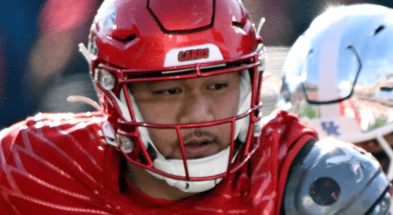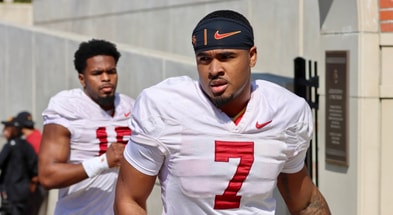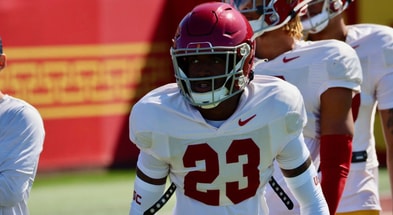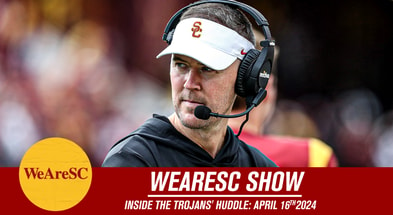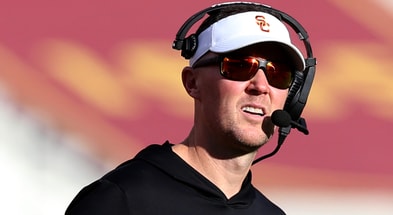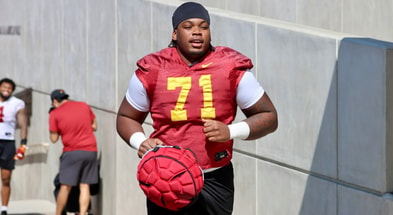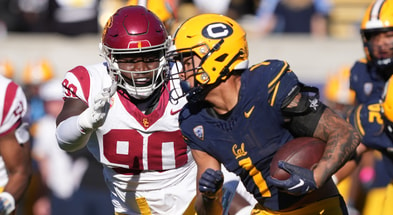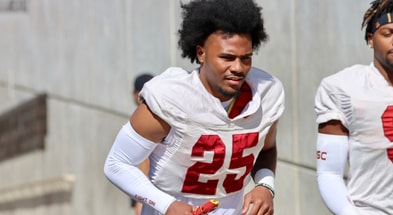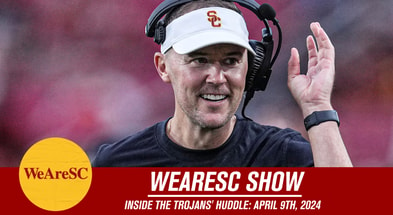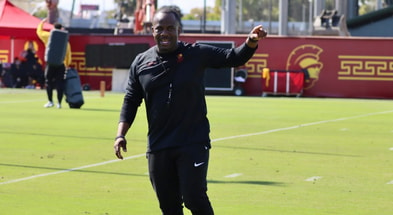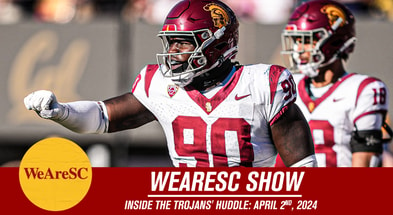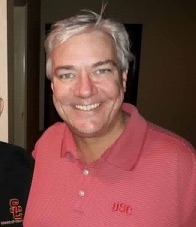Musings from Arledge: Welcome to NIL, Riley's Offense, and 2022 Win Predition
College football has officially entered its “Show me the money!” stage. Or let me put it a different way: college football players are now openly participating in the “Show me the money!” game, a game that had previously been played at a high level only between networks, schools, coaches, and SEC players. This change shouldn’t bother us. The NCAA, one of the most-corrupt, cynical institutions ever seen on God’s green earth, has long been a money-making machine. The NCAA makes almost a billion dollars a year from the men’s basketball tournament alone. Amateurism done right, yet? That it has been turned into a toothless shell of a corrupt organization is no reason to shed tears.
The schools also make a fortune, with the richest athletic programs pulling in hundreds of millions a year. And coaches are obviously being shown the money. Mel Tucker — Mel Tucker! — signed a 10-year, $95 million contract. Mel Tucker is a good football coach. But he ain’t Nick Saban. When the Mel Tuckers of the world are signing nine-figure contracts, you’re talking about an industry that is flush in cash.
In 1982, Bear Bryant made $450,000 at Alabama. That was a good salary, almost 20 times the median family income. Lincoln Riley is probably going to make close to 140 times the median family income. That’s a big jump in compensation, and it’s not unjustified for the CEO of an organization in a big-money business where the difference between success and failure is many tens of millions of dollars in profits per year.
In light of the big money being thrown around, it should be no surprise that the athletes are interested in getting in on the action, and it should come as no surprise that the courts have effectively shattered the anti-competitive framework that kept all (legal) money out of the hands of the on-field talent, especially where in professional sports, the players generally receive about 50% of the revenues. Having a multi-billion dollar industry where the workers were kept poor in the name of amateurism so that professionals like Kirk Herbstreit, Dabo Swinney, and James Pitaro could make millions was always unjust.
Now that NIL deals can be signed, and now that the courts have made clear that the NCAA itself is comatose and is being kept alive by machines and inertia, such that its other rules are of questionable enforceability, players are going to cash out.
That doesn’t make it any less unseemly for many. To me, the most unseemly aspect of the whole thing is not that players can capitalize on their names, images, and likenesses. That’s only fair and right. No, the problem for me is that players aren’t actually being compensated for the value of their NIL. When Tom Brady signs an endorsement deal, he is being paid because the company hiring him believes he can add to their bottom line. Nobody would give Tom Brady a $2 million endorsement deal if they believed he would add only $10,000 value to his corporate sponsor.
But in college football today, this is exactly what is happening. The Texas linemen who will receive hundreds of thousands of dollars are not being compensated because their names, images, or likenesses add hundreds of thousands of dollars to anybody’s bottom line. Those names and faces aren’t moving shoes or soft drinks. The BYU walk-ons that are being given free rides are not contributing that kind of money to any advertising campaign. These players are being compensated economically for purely non-economic reasons: because there are fans with a lot of money who love to watch their team win football games, and they are willing to pay cash to make that happen. Deals like this aren’t business deals; they aren’t NIL deals; they are “rich people care more about college football wins than whatever else they would do with their excess assets” deals.
You might think this benefits the rich and powerful programs. And it does, for the most part. Alabama has plenty of fans who care deeply about the Tide’s on-field success. They will find money to pay for the top talent.
But this influx of cash means that smaller players may also benefit. Teams that can’t convince a kid to sign a letter of intent based on their tradition, academics, or offensive system might be able to persuade a kid with cold, hard cash. And whereas such a school cannot pay its entire offensive line the going Texas rate, that doesn’t mean they can’t come up with enough cash to land a star here and there. There may be more kids spurning the blue-blood programs for a small program in the years to come.
It’s obviously not news that money helps in college football. Money always has. Nike money helped Oregon go from traditional doormat to what they are now – an irritating upstart that can’t keep any of their successful coaches but does have a name and national footprint. That was all about money. But now money can really help. If Jeff Bezos wanted, he could turn Bowling Green into a national power. I suspect Bezos has no such interest, but he could lure away a coach for $15 million per year, build magnificent new facilities to rival any SEC power, create a NIL juggernaut that would pay blue-chip athletes $1 million each, and maybe play one home game a year on the moon. A program like that would win a national title in the next five to ten years, based solely on cash. That’s the world we now live in.
If you don’t like that – and I can understand if you don’t – then college football may not be for you … although I would ask why you were okay with all of the professionals making many millions and only got a sick feeling in your stomach when the kids started to get theirs, too. But if so, stick with the NFL, where the greed is part of the league’s charm. Or you can, I suppose, turn your attention to high school football – real, amateur sports, the way God intended – and watch Allen High School play in a 25,000-seat palace with a Jumbotron or Mater Dei take all of the promising prospects from every public high school in So Cal and play on national TV half the time.
But if, like me, your roots are sunk too deeply into the college football soil, then you’ll need to make peace with this new world. It’s not a tragedy, really. If Mel Tucker is getting a salary of $9.5 million a year, and Kirk Herbstreit’s ESPN checks total $2 million a year not counting endorsements, is it really that awful that some 18-year-old kid who won the genetic lottery is getting $150,000 to smash his head into other monstrous kids at Darrell K. Royal Stadium?
And if that’s happening, it’s time for USC to figure it out. USC is supposed to be on the cutting edge of NIL deals. It’s not, or at least it hasn’t made its business plans public if it is. Texas has thrown the old strategies on their heads. Lincoln Riley says USC is committed to doing everything it needs to do to bring national titles back to Troy. Well, that means USC needs to be able to match Texas dollar-for-dollar for offensive line recruits. If you can’t do that, it doesn’t really matter that you’re paying a young superstar coach an eight-figure annual salary. And you can be sure that Lincoln Riley didn’t take this job, didn’t put his career in the hands of USC’s administration, simply to watch his program lose the best players to other programs that care more and pay more.
If USC wants to win — and we’re told that they’re committed to doing just that — then it’s time to show these kids the money. It may be unseemly, but paying $25 million a year for coaches who can’t compete for titles because other schools are paying players doesn’t sound like a great plan.
And make no mistake, this money is not only a recruiting issue, but a retention issue as well. Want to keep your blue-chip players? Keep the money rolling in. Want to clear space on the roster? Have boosters remove NIL deals; the kids will jump ship like it’s on fire. And watch college football free agency at work. As for me, I’m making peace with it, especially because that free agency is the only way USC will get back on track in the short term after so many years of neglect, negligence, and malpractice.
Isn’t it nice to look forward to signing day (signing week? signing months?) again? This week was obviously just the tip of the iceberg; Lincoln Riley is talking about having 35 new players on the roster next year. But already I’m dreaming about seeing Gary Bryant Jr., Raleek Brown, and Zachariah Branch on the field at the same time in Lincoln Riley’s high-powered offense. I’m already excited to think about Domani Jackson jumping an out route and going 60 yards the other way. Yes, USC has a long ways to go, and it really needs to increase the talent level in the trenches. But I think Lincoln Riley has earned the benefit of the doubt. He knows that better than we do, and I’m sure he’ll take care of it. So for now, I’m just going to enjoy the process of watching USC football wake up again.
Matt Leinart says the Coliseum will be sold out for the opener. I don’t know if he’s right about that, but it wouldn’t shock me. I think a lot of USC fans will want to be there for the first game of this promising new era. And I’m quite sure that whatever the attendance, we’ll see a completely different atmosphere. I miss the days when USC was so successful that my season tickets were being moved into worse and worse locations every year.
And I’m going to go on record now: USC wins at least nine games next year. The schedule is favorable, we will see a large number of new playmakers, and the new staff will have removed at least some of the stench from Clay Helton’s lax, lazy culture. No, the Trojans won’t compete with Alabama next year. But next year’s offense will be light years better than what we’ve seen. That’s a given. And if Riley can find some playmakers on the front seven before the fall, a conference title run is well within reach.
It sounds like the original story about Travis Hunter’s reasons for flipping to Jackson State may have been wrong. He may not have been given a seven-figure signing bonus by a third party. The facts will come out eventually. But it’s not crazy to think that a top corner might want to play for Deion Sanders, especially where he can be sure that he’ll (1) be starting from day one, and (2) be the primary focus for Deion’s coaching efforts for the next three years. If you are convinced that playing corner in the NFL is in your future, there are worse spots to land than in Camp Prime Time.
Lincoln Riley is a smart guy. He must know something of USC’s tradition. But does he realize how badly the Trojans need to beat Notre Dame next year? I sure hope so. It is well past time USC blasted those guys.
